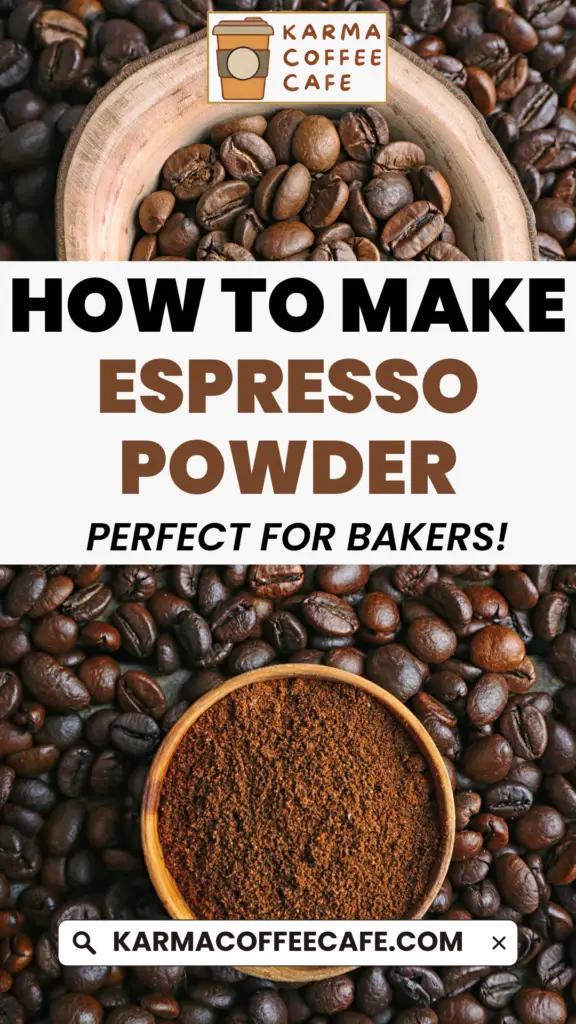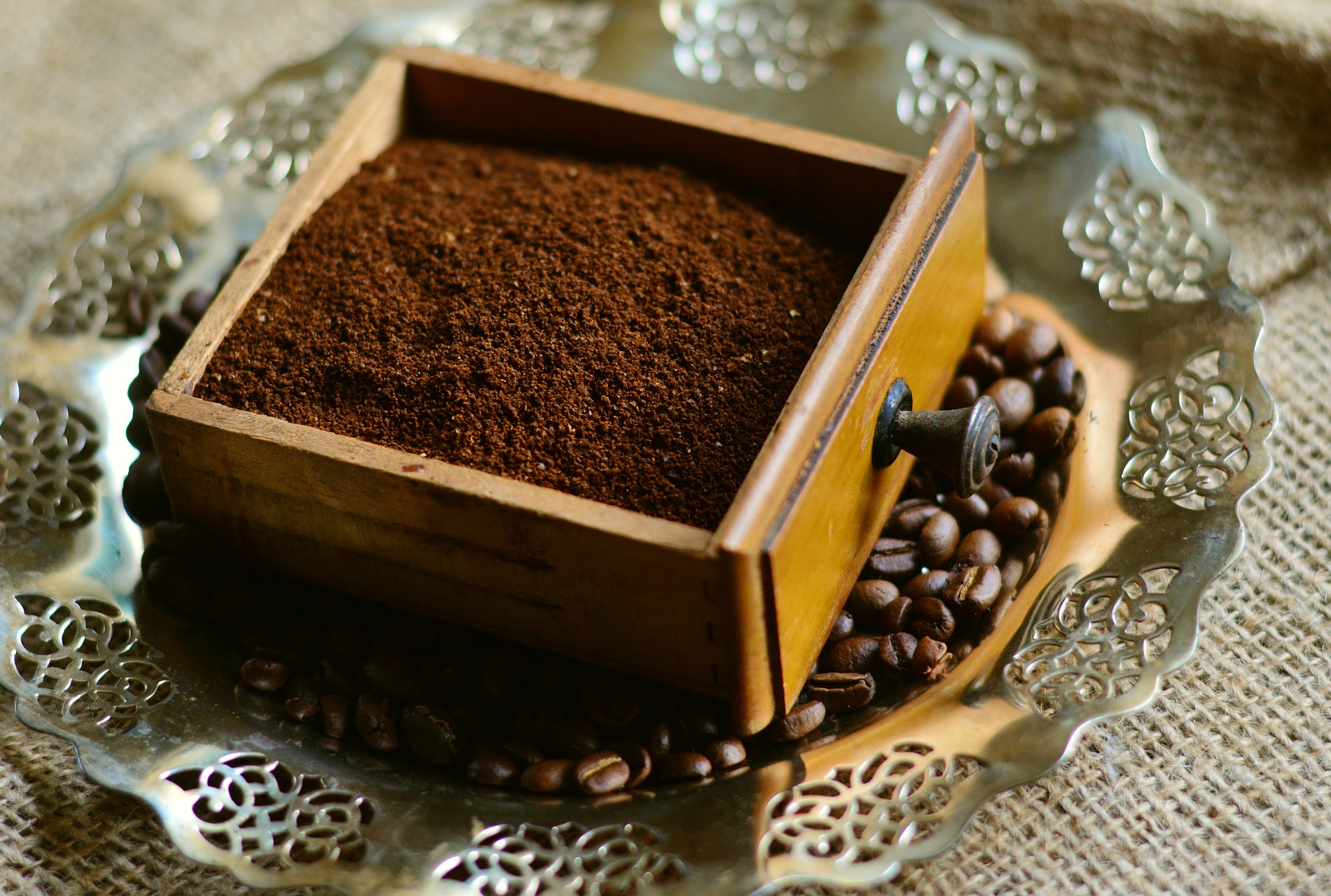Have you ever wondered how professional bakers make their chocolate desserts so rich and flavorful?
The secret is espresso powder.
This magic ingredient enhances the taste of chocolate without leaving a coffee aftertaste.
Best of all, you can make it at home easily and cheaply.
Follow our simple steps to create your own fresh, flavorful espresso powder and take your baking to the next level.
Let’s dive in and discover how you can make this secret ingredient right in your kitchen.
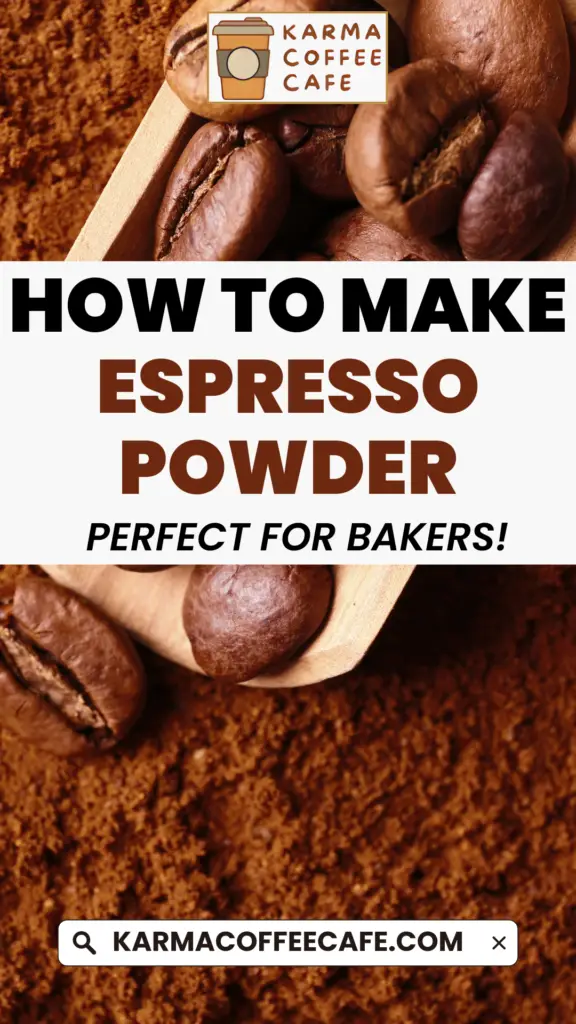
How To Make Espresso Powder: At A Glance
- Selecting the Beans
- Preparing the Beans
- Baking the Beans
- Grinding the Beans
- Storing the Espresso Powder
Introduction to Espresso Powder
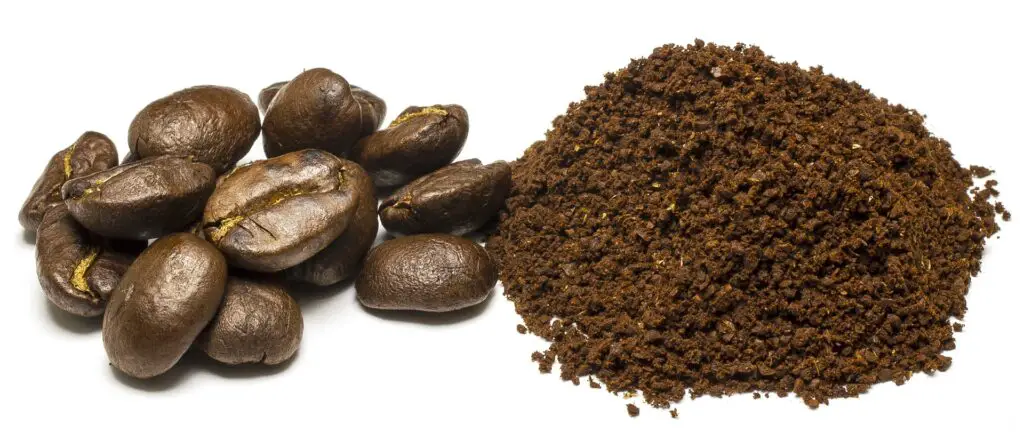
What is espresso powder?
Espresso powder is a fine, concentrated coffee product made from espresso beans.
The beans are ground, brewed, dried, and then ground again into a fine powder.
This powder is not the same as ground coffee or instant coffee.
It is more concentrated and has a richer flavor.
Uses of espresso powder in baking and cooking
Espresso powder is a versatile ingredient in the kitchen.
It is primarily used to enhance the flavor of chocolate in baked goods.
You can add it to chocolate cakes, brownies, cookies, and frostings.
The powder intensifies the chocolate flavor without adding a strong coffee taste.
Besides sweet treats, espresso powder can also be used in savory recipes.
It adds depth to dry spice rubs, marinades, and barbecue sauces.
Benefits of making your own espresso powder
Making your own espresso powder at home has several benefits.
First, it is cost-effective.
Buying pre-made espresso powder can be expensive, but making it yourself is cheaper.
Second, homemade espresso powder is fresher than store-bought versions.
You control the process, ensuring the freshest product.
Third, you can use leftover coffee grounds, reducing waste.
Finally, making espresso powder at home is easy and requires only a few basic ingredients and tools.
The result is a flavorful, versatile ingredient that can elevate both sweet and savory dishes.
Ingredients and Equipment Needed
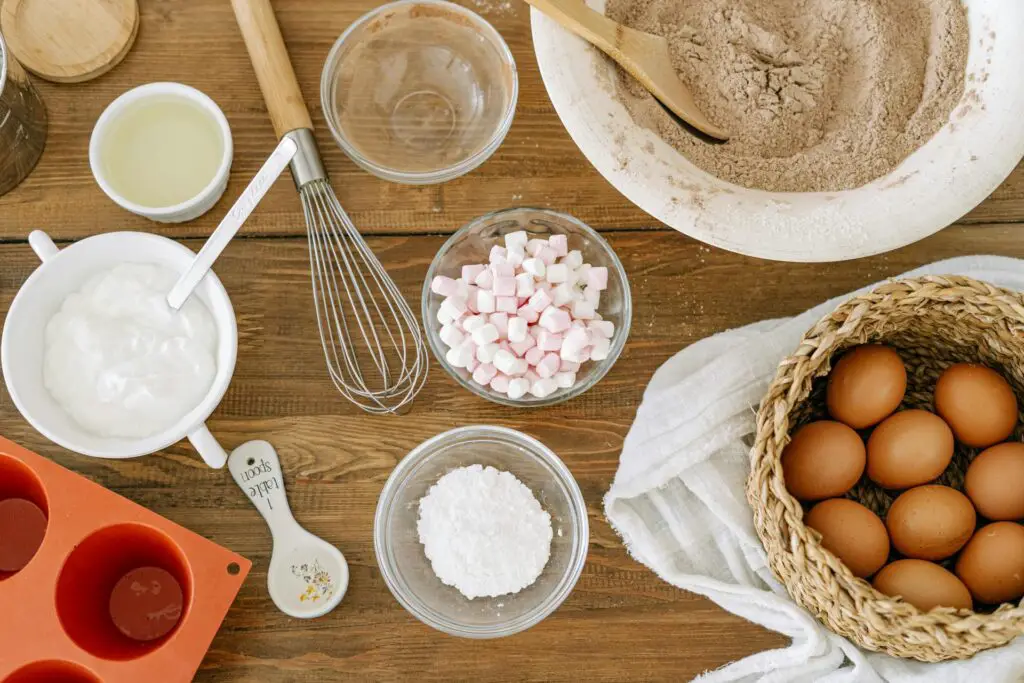
Espresso Beans
The main ingredient for making espresso powder is espresso beans.
For the best flavor, use organic, medium roast espresso beans.
These beans have a balanced taste that enhances both sweet and savory dishes.
You can also use darkly roasted beans if you prefer a stronger flavor.
Baking Sheet
A baking sheet is essential for drying the espresso beans.
Spread the beans in a single layer on the baking sheet to ensure they dry evenly.
This step is crucial to achieve the right texture for grinding.
Coffee or Spice Grinder
To turn the dried espresso beans into a fine powder, you need a coffee or spice grinder.
This tool ensures that the beans are ground to the right consistency.
A finer grind will blend seamlessly into your recipes, enhancing the flavors without leaving any gritty texture.
Airtight Container
Once you’ve made your espresso powder, store it in an airtight container.
This will keep the powder fresh and prevent it from absorbing moisture or odors from other foods.
A tightly sealed container will help maintain the powder’s flavor for up to six months.
Optional: Dehydrator
If you have a dehydrator, you can use it to dry the espresso beans instead of an oven.
A dehydrator can provide a consistent low heat, which is ideal for drying the beans evenly.
This method is an excellent alternative if you prefer not to use your oven for an extended period.
Step-by-Step Guide to Making Espresso Powder

Step 1: Selecting the Beans
Start with high-quality espresso beans.
As mentioned earlier, Organic, medium roast or darkly roasted espresso beans are recommended for the best flavor.
You can use fresh beans or leftover coffee grounds.
Fresh beans will give a stronger flavor and higher caffeine content.
Leftover grounds are a great way to reduce waste.
Step 2: Preparing the Beans
Spread the espresso beans or used coffee grounds evenly on a baking sheet.
Make sure they are in a single layer to ensure even drying.
This step is crucial for achieving the right texture for grinding later.
Step 3: Baking the Beans
Preheat your oven to 200ºF (93ºC).
Place the baking sheet with the espresso beans or grounds in the oven.
Bake for about an hour.
The beans should be lightly toasted and fully dried by the end of this period.
If you have a dehydrator, you can use it as an alternative method.
It provides a consistent low heat, which can be ideal for drying the beans evenly.
Step 4: Grinding the Beans
Once the beans are completely cooled, it’s time to grind them.
Use a coffee or spice grinder to grind the dried beans into a fine powder.
If you don’t have a grinder, you can use a blender, food processor, or even a mortar and pestle.
The goal is to achieve a fine, consistent powder that will blend seamlessly into your recipes.
Step 5: Storing the Espresso Powder
Transfer the freshly ground espresso powder into an airtight container.
Store it in a cool, dark place to maintain its flavor and potency.
Properly stored, your homemade espresso powder will stay fresh for up to six months.
Popular Recipes Using Espresso Powder
Chocolate Baking Recipes
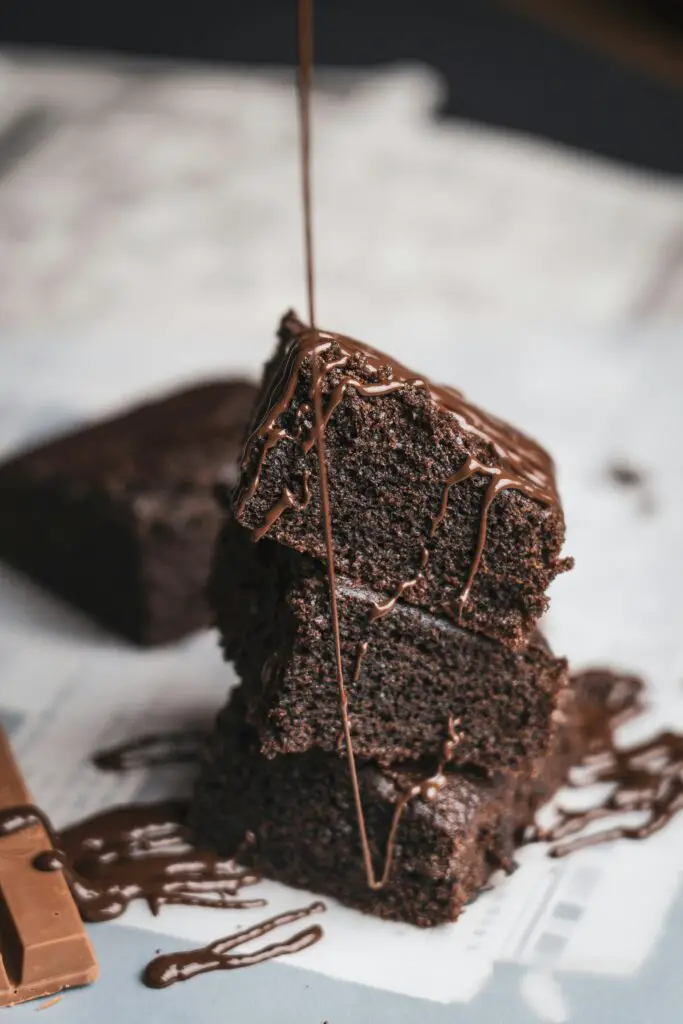
The Best Chocolate Cake
Espresso powder is the secret ingredient that takes chocolate cake to the next level.
It deepens the chocolate flavor, making each bite rich and satisfying.
Add a teaspoon to your favorite chocolate cake recipe for an enhanced taste that will impress everyone.
Perfect Chocolate Buttercream Frosting
For a frosting that perfectly complements your chocolate cake, mix in some espresso powder.
It balances the sweetness and intensifies the chocolate, creating a luxurious and creamy finish.
Chocolate Banana Bread
Give your banana bread a delicious twist by adding espresso powder.
It pairs wonderfully with the chocolate chips often included in this recipe, making the flavors more complex and delightful.
Best Chocolate Cupcakes
Elevate your chocolate cupcakes by incorporating espresso powder into the batter.
This addition will make the chocolate flavor more pronounced, creating a memorable treat for any occasion.
Fudge Brownies
Espresso powder is a must for anyone looking to make the ultimate fudge brownies.
It enhances the chocolate, resulting in a richer and more decadent dessert.
Just a small amount mixed into the batter can make a significant difference.
Savory Recipes
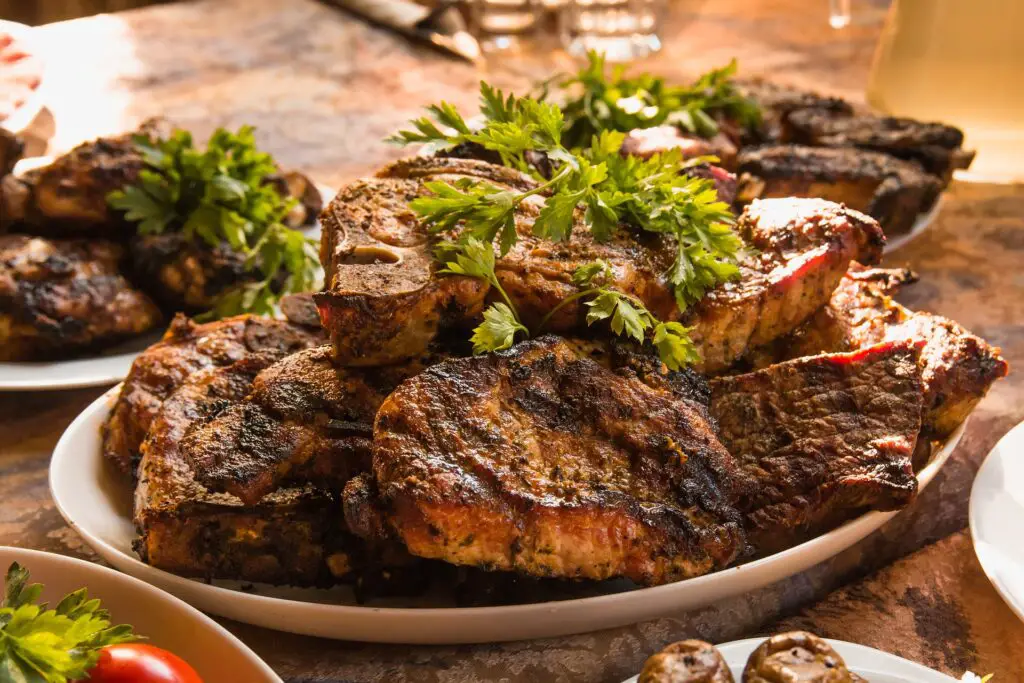
Dry Spice Rubs for Meat
Espresso powder isn’t just for sweets.
It adds depth and a subtle smokiness to dry spice rubs for meat.
Use it in rubs for beef, pork, or even chicken to create a rich and flavorful crust.
Marinades
Incorporate espresso powder into marinades to enhance the flavors of your meats.
It works well with ingredients like garlic, soy sauce, and brown sugar, creating a complex and delicious marinade.
Barbecue Sauces
Espresso powder can add a unique twist to your homemade barbecue sauces.
It brings a deep, earthy flavor that complements the sweetness and tanginess of traditional barbecue sauces.
Try adding it to your next batch for a surprising and delightful flavor boost.
Does espresso powder leave a coffee taste in baked goods?
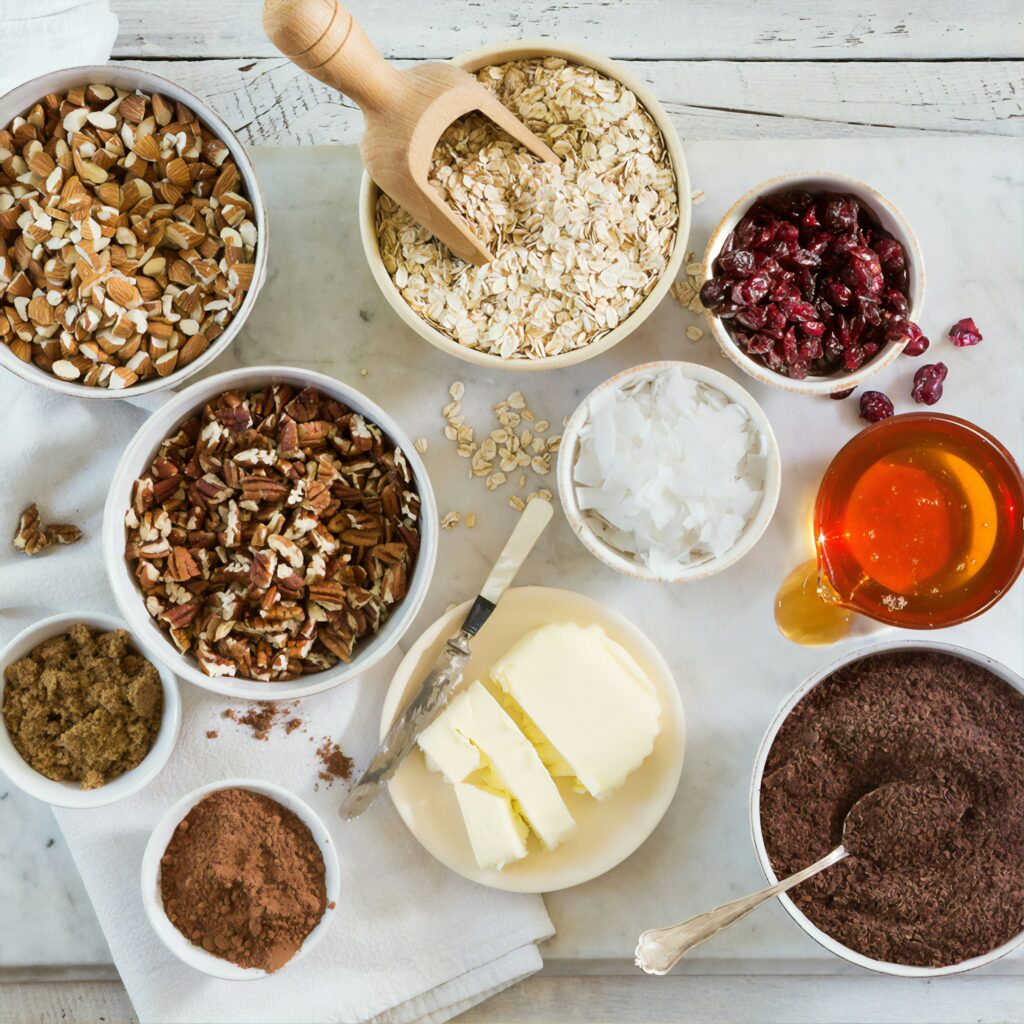
No, espresso powder does not leave a coffee taste in baked goods.
Instead, it enhances and deepens the chocolate flavor without adding a noticeable coffee taste.
This makes it a popular secret ingredient among bakers who want to intensify the richness of chocolate desserts without altering their primary flavor.
The result is a more robust and complex chocolate taste that elevates your baked goods to a new level of deliciousness.
Can I substitute instant coffee for espresso powder?
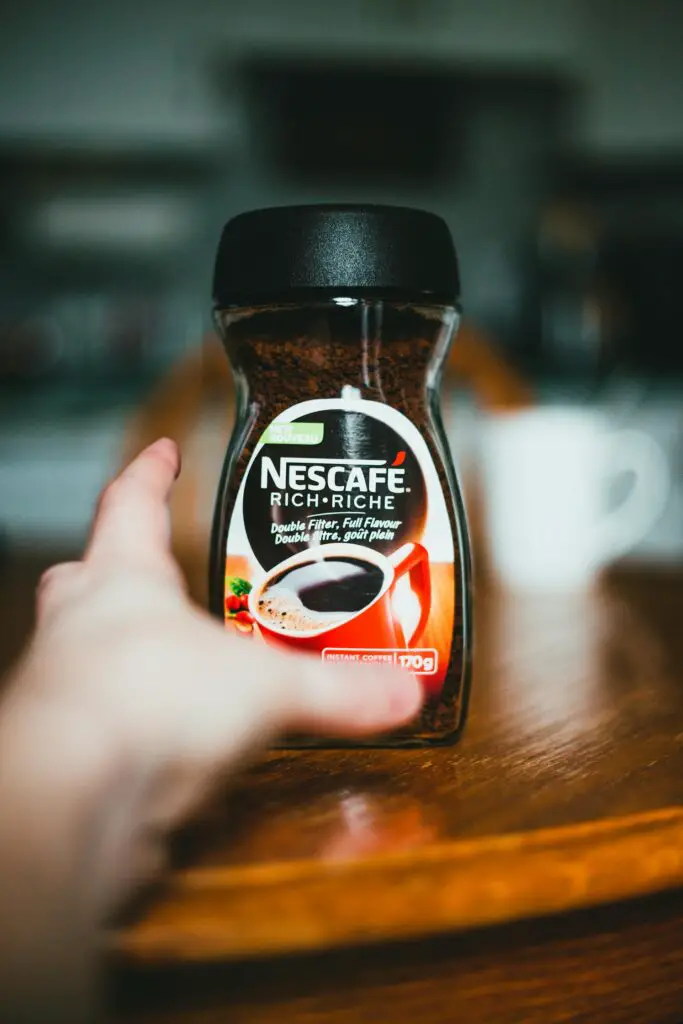
Yes, you can substitute instant coffee for espresso powder, but there are a few things to keep in mind.
Instant coffee is less concentrated and has a milder flavor compared to espresso powder.
Here’s how you can use it as a substitute:
- Use More Instant Coffee: To match the intensity of espresso powder, you may need to use more instant coffee. A general rule of thumb is to use about double the amount. For example, if a recipe calls for 1 teaspoon of espresso powder, use 2 teaspoons of instant coffee.
- Adjust for Flavor: Instant coffee can be more bitter than espresso powder. Taste your batter or mixture and adjust the amount if needed. You might need to add a bit of sugar or another sweetener to balance the flavor.
- Dissolve First: Instant coffee dissolves in liquids easily. If your recipe involves a wet mixture, dissolve the instant coffee in a small amount of hot water before adding it. This ensures an even distribution and avoids any gritty texture.
While instant coffee can work in a pinch, the flavor won’t be as rich and intense as it would be with espresso powder.
However, it’s a convenient and readily available alternative that can still enhance the chocolate flavor in your baked goods.
How Many Espresso Beans Do You Need to Make Espresso Powder?
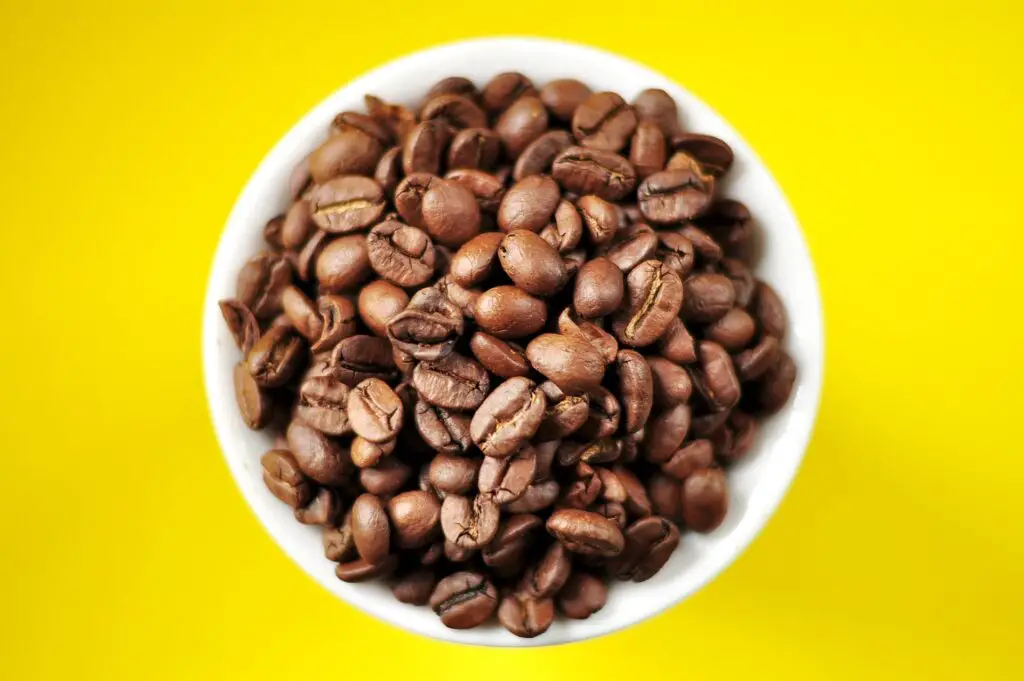
To make espresso powder, the general rule is that one cup of espresso beans will yield close to one cup of espresso powder.
Here’s a breakdown:
Using Whole Beans
- Start with one cup of whole espresso beans.
- This amount, once ground and processed, will produce nearly one cup of fine espresso powder.
Using Brewed Grounds
- If you are using leftover coffee grounds, you will need about the same volume.
- For example, one cup of used grounds, once dried and ground, will also yield close to one cup of espresso powder.
What are the differences between espresso powder, ground coffee, and instant coffee?
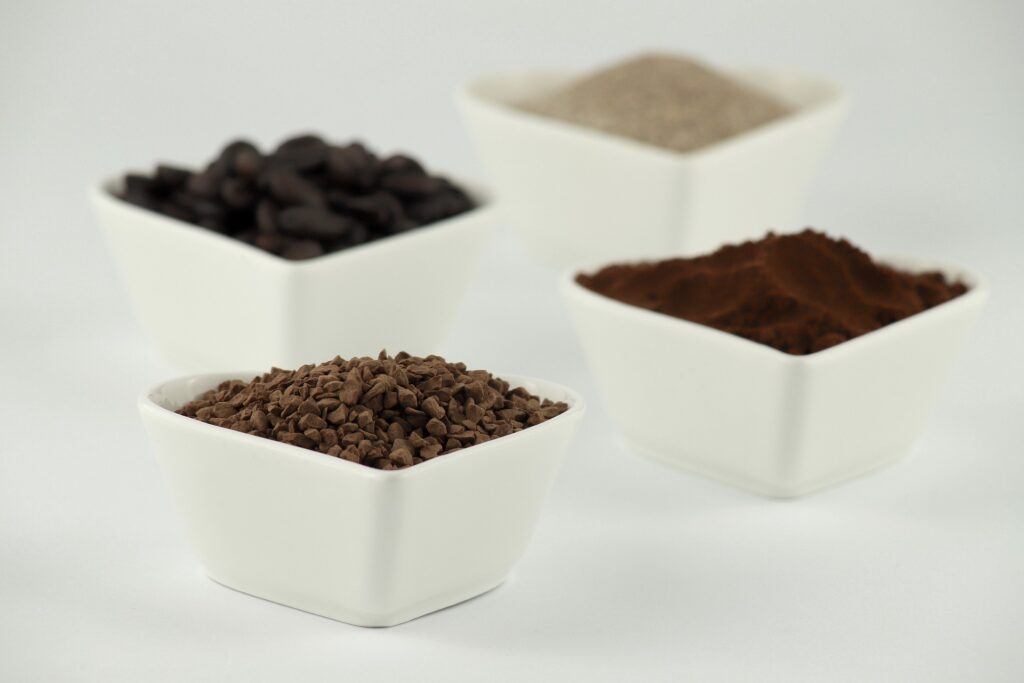
- Espresso Powder: Made from darkly roasted coffee beans that are brewed, dried, and then ground into a fine powder. It is highly concentrated and used primarily in baking to enhance flavors without adding a strong coffee taste.
- Ground Coffee: Simply coffee beans that are ground to various levels of coarseness, typically used for brewing coffee. It is not as finely ground as espresso powder and is not brewed or dried before grinding, making it unsuitable as a direct substitute in baking.
- Instant Coffee: Made from brewed coffee that has been dehydrated into granules. It dissolves quickly in water, making it convenient for a quick cup of coffee. While it can be used as a substitute for espresso powder in recipes, it lacks the depth and intensity of flavor that espresso powder provides.
Final Thoughts
Making your own espresso powder at home is simple and rewarding.
It enhances the flavor of chocolate in your baking and adds depth to savory dishes.
Plus, it’s cost-effective and allows you to repurpose coffee grounds.
Experiment with it in your favorite recipes.
You’ll be amazed at how much a small amount of espresso powder can elevate your dishes.
Give it a try and enjoy the rich, complex flavors it brings to your culinary creations.
FAQs
Is espresso powder gluten-free?
Yes, espresso powder is gluten-free.
It is made from pure coffee beans, which do not contain gluten.
However, if you have severe gluten sensitivities, it’s always best to check the packaging for any potential cross-contamination during processing.
Can I use any type of coffee beans?
You can use any type of coffee beans to make espresso powder, but medium or dark roast beans are recommended for the best flavor.
These beans provide a richer, more intense taste that enhances both sweet and savory dishes.
Using high-quality, organic beans will yield the best results.
